#Ligament injuries
Explore tagged Tumblr posts
Text
“You’re going to blow out your arms,” the villain observed. They watched as the hero merely grit their teeth, shoving themself through another pull-up. It looked painful, and if the sweat slicking the hero’s brow was any indication, it was.
They waited for the hero to let themself drop from the bar and accept the villain was stronger. But they didn’t.
Three more pull-ups, and the villain stepped in.
“Hero,” they said slowly. “You’re about to tear the ligaments in your arms. You need to stop.”
The hero blew out a shuddering breath. Struggled for purchase, fighting gravity—and let themself drop.
The hero’s hands were bleeding, calluses torn open by the bar. The hero didn’t seem bothered when their own hands shook so much that their blood began to splatter on the gym floor.
For a moment, the villain could only stare at them.
Shit.
They didn’t know how to handle this. They knew the hero was dedicated. They knew the hero was strong, and perpetually trying to be stronger, but they hadn’t thought…
They hadn’t thought the hero would be so willing to tear apart their own body for success.
It was supposed to be fun, the villain thought. They felt a little sick as the hero pressed their palms together to soothe the bleeding, an action that was practiced and familiar. As if they had done this before.
The hero reached for something in their bag, smearing blood on the side, and pulled out a roll of blue electrical tape. The villain didn’t understand why, until the hero tore a strip off and made to wrap their hands with it.
The hero would be the death of them.
They crouched in front of the hero, plucking the electrical tape out of their hands.
“What are you doing with this?”
The hero blinked at the villain like they were the strange one in this situation.
“Wrapping my hands?”
The villain hissed in a breath.
“With electrical tape?”
The hero flushed slightly, looking down at their bloody hands. They looked close to tears.
“It…sticks to skin, really well. And it doesn’t move, either, when you move your hands or wherever else, even if you’re fighting. Plus, blood doesn’t make it come off, at least, not for a while.”
The villain blinked at them.”
“Blood doesn’t make it come off,” the villain repeated, processing. The hero nodded, reaching for the electrical tape. The villain settled it out of reach.
“Not if you wrap it right.”
Dimly, the villain realized that meant the hero had done this enough times to have it down to a science.
“And you couldn’t use a bandaid?” The villain asked incredulously. The hero shrugged a shoulder, then winced at the motion.
Yeah, the hero had absolutely blown out their arms.
“Bandaids move—“
The villain hushed them.
“Be quiet for a second.”
The hero, wisely, went quiet.
The villain rubbed a hand over their face, then studied the hero for a moment. They took one of the hero’s hands into their own, studying the damage.
“Why did you do this to yourself,” the villain murmured.
“What do you mean, why,” the hero snapped. “It’s my job.”
“Your job is to save people,” the villain corrected. “Not destroy yourself.”
“I’m not destroying myself—“
“You are.”
“Shut up—“
“Hero.”
“I need to be better,” the hero snapped. Their voice rang out across the gym, echoing into the rafters, and they both froze. After a moment, the hero spoke again, voice soft. “I need to be better.”
They said it like they needed the villain to understand. The villain wondered who they were really saying it to—the villain, or themself.
“Better than who?”
“Everyone.” It was hushed, like a secret.
The villain watched them, waiting.
The hero took a shaky breath
“My whole thing is being the best. I have always been the best. That’s the only reason I matter. If I’m not strong enough, then I am nothing, so I need. to be. better.”
The hero had started crying, very quietly, like they were afraid to take up too much space.
The villain was not equipped to handle gifted kid burnout.
“There’s more to you than just being a good athlete,” the villain said hesitantly, and the hero shook their head.
“No. There isn’t.”
“Hero.”
“Can you give me back my electrical tape?” They hiccuped to contain a sob.
“No,” the villain said firmly, and then the hero really was sobbing.
“You don’t understand—“
The villain didn’t. Not really. They had never been the kind of talented that the hero was.
They wondered now if maybe that was a blessing.
“I don’t,” the villain agreed. “But I do understand that you’ve saved half the city, and you give everything you have to give, and you always do your best.”
“But I-“
“No.” The villain stopped them. “You are doing your best.” They tipped the hero’s chin up until they met the villain’s eyes. “And it is enough.”
The hero froze, eyes darting over the villain’s face. They wondered if anyone had ever said that to the hero, if whatever mentor they had was giving them anything other than orders to be stronger. Be better. Be more.
The villain had some new targets to take care of, it would seem.
For now, though, they had to take care of hero.
“We’re going to go wrap your hands,” they said softly. “And then we’re going to take care of your arms, and you’re going to take a nap.”
The hero nodded, watching them like they were some kind of good, selfless person.
“And if I ever catch you using electrical tape again, so help me, I will put you six feet under.”
That startled a laugh out of the hero, and they let the villain guide them to their feet.
“Fine.”
The villain turned to them. “Okay?”
Are you going to be alright?
The hero seemed to understand.
“Okay,” the hero agreed.
Yes.
And so, it was.
#writing#writing community#snippet#angst#heroes and villains#ficlet#writblr#hero/villain#hero whumpee#exhaustion#overworked#villain caretaker#whump#kind of#in case you’re wondering. yes you CAN do this to yourself. it’s completely possible#essentially what happens is if you do a motion (a pull-up) more than your body is capable#it gets mad. this is different from training till failure. this is to failure and then beyond#so while you started using the correct muscle groups you those muscles get tired and despite the tired you don’t stop#so then your body switches to muscles it SHOULDNT BE USINF and then you fuck up your elbows (in the case of pull-ups)#and then you can’t straighten your arms for a week bc the ligaments and tendons and all the little movement parts want to keep it curled in#I’m not a doctor#I’m just a gifted kid who was an athlete who got burnt out and destroyed her body lmao#this is possibly maybe based on true events that occurred#anyways. I’m not a doctor but you can use electrical tape on wounds. yes it sticks. yes it stays. it’s honestly very useful.#electrical tape > bandaids#do not do anything listed here it is BAD. do not blow out your muscles it hurts. properly clean ur injuries. I beg you.#don’t get injured at all#thank you to my friend who went “pull-up’ competition and then watched me create this angst#love u besties. drink water. go to sleep. summon demons. ❤️ self care
382 notes
·
View notes
Text
also little injury breakdown i think mack getting hit into the boards was the main thing of concern, i think him getting sat on by the ref is probably mostly harmless, i didnt see any skate blades near body parts or unnatural limb angles, guppy probably just got the wind knocked out of him!
#sharks lb#for anyone who might be worried#im pretty good at spotting cruciate ligament injuries (acl/mcl/pcl) by now#<- studies biomechanics (human body movement) and had sports-obsessed professor#(we watched so many videos of athletes getting their acls torn that it was borderline disturbing. anyway *if ur happy and u know it tune*#if your knee bends away from your body thats a tear! if your knee bends away from your body thats a tear! if your knee bends away from your#body and it made a noise thats pop-y if your knee bends away from your body that's a tear <3)
12 notes
·
View notes
Text
i participated in the art party! thank you everybody who let me draw your characters :>
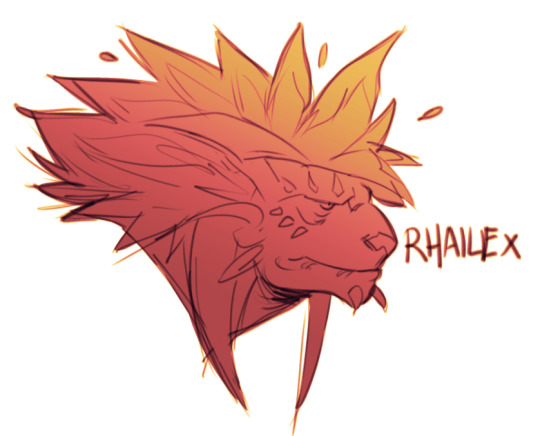
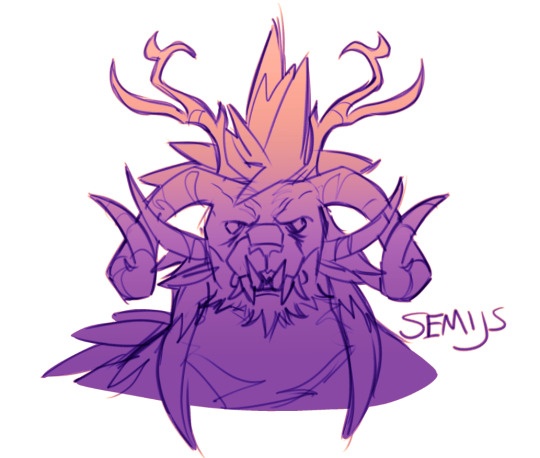
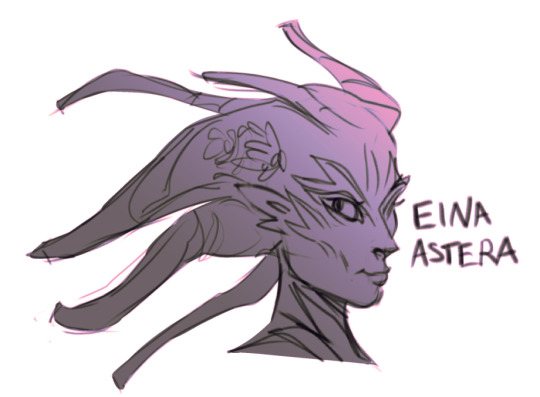

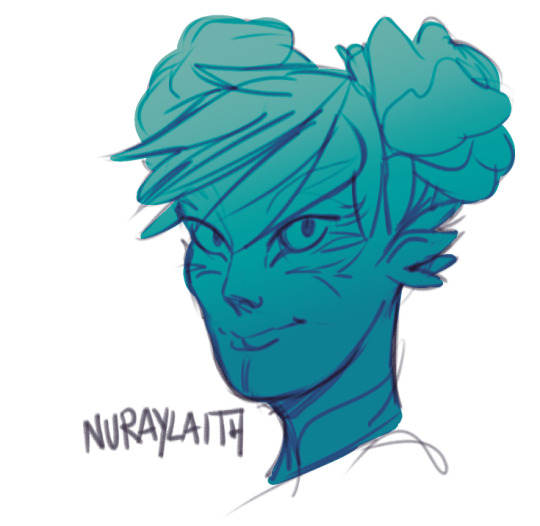
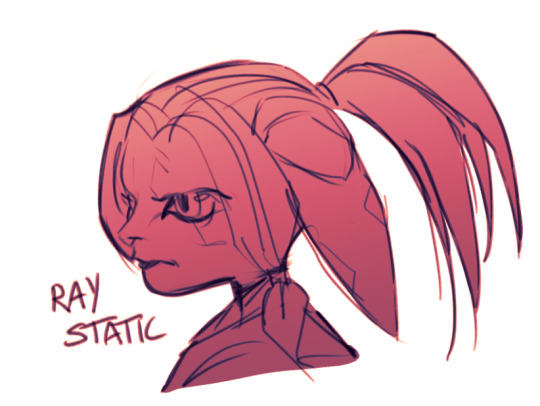
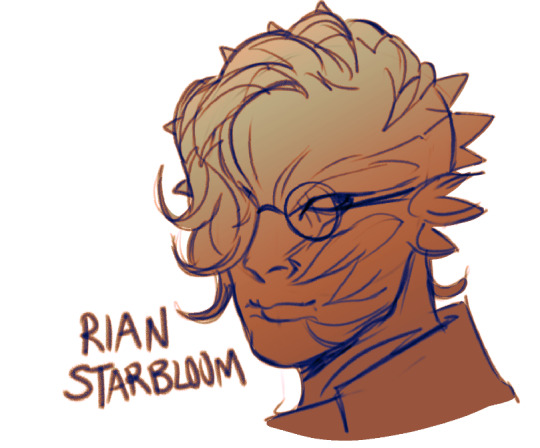
#Drewcakemix#gw2#guild wars 2#catdotpng#charr#sylvari#did this on a hand injury. moment of silence for my bones and ligaments#what great fun!! i'll try and make the next one#vsartparty#siins#if you're seeing this and i promised to tag your account and you're not seeing it. erm. i forgot#i wish i could have drawn more!! so many amazing characters
213 notes
·
View notes
Text
Hey y'all, I can't figure out a word so I am asking for help figuring out the word I am missing What do you call the minor injury when you put force on a joint in a direction it doesn't usually experience force, but it's not hyperextension or a sprain? My mom always called it "jamming my fingers" when I was growing up (it was usually caused by failing at catching footballs in PE for me) but idk if that's the actual name or what that would be called for other joints. This question brought to you by me falling earlier today and catching myself before my head hit the ground but it put force in a weird way on my elbows and now they are kinda sore?
#the person behind the yarn#hi I'm TJ I don't know muscle terms lol#this despite me being sodium georg and thus having like so many muscle issues#just so many. I keep getting referred to neurologists for muscle issues#they keep testing it and going well...it's just your electrolytes acting up again#but idk what muscle injuries are called#is this even a muscle injury??? joint injury. Ligament? tendon? I have no idea
10 notes
·
View notes
Text
Ik DAMN WELL those batdam members have chronic pain there’s no way you go out almost everyday fighting basically a war on minimal hours of sleep and only have light wear and tear to show for it, must hurt incredibly
#i could neverr (even tho child me and me me think it’s epic)#i have 1 pulled ligament 1 (!) and it acts up like crazy sometimess#just laying there with the same pain o had when it was recovering and it has me like:0#now having countless tears’ sprains’ pulls’ breaks’ stabs’ bullet wounds’ bruises#and anything else you can think of? DAMNN must hurt like crazy’ ik their bones/old injuries hurt on cold winter days#dc#batman#batfam#should i tag everyone id like to#dick grayson#tim drake#bruce wayne#duke thomas#damian wayne#barabra gordon#jason todd#cassandra cain#there’s so many#dami.speaks<3
50 notes
·
View notes
Text
Nothing says Arsenal player like a knee injury. Welcome Laia Codina!
#we need to ban knee injuries and tell every ligament in there to cut that shit out#laia codina#arsenal wfc#arsenal girlies at the wc (ig lol)#espwnt#t: wwc 2023#g: esp v eng
3 notes
·
View notes
Text
Wheee MRI results
I fell flat on my back while skiing on February 6th. I’ve been having elbow pain since then, and can’t straighten my left elbow fully. My chiropractor, when we determined we weren’t making progress, asked me to go get imaging done. I have a consultation on tuesday, but the initial results from today’s MRI is that I have a small, nondisplaced fracture and a high-grade partial ligament tear.
#not fr#eek speaks#I'm amused by my own aptitude for inflicting injury upon myself#last season I pulled a ligament in my knee#in 2016 a horse tripped and smashed my leg and tore a muscle in it
3 notes
·
View notes
Text
We ask your questions so you don’t have to! Submit your questions to have them posted anonymously as polls.
#polls#incognito polls#anonymous#tumblr polls#tumblr users#questions#polls about the body#submitted june 7#pain#injury#polls about health
27K notes
·
View notes
Text
Conquer Lateral Ankle Sprains
Don’t let a lateral ankle sprain hold you back any longer. Take the first step towards swift recovery and lasting resilience with LAB Sports Therapy.
#lateral ankle sprain#ankle sprain rehab#ankle sprain treatment#ankle sprain physical therapy#ankle sprain exercises#ligament injury recovery#rehabilitation for ankle sprains#balance training for ankle injuries#preventing ankle sprains
0 notes
Text
Chronic ankle pain
Chronic ankle pain can have many causes. Here are some of the most common:
Previous injuries and instability :
* Repetitive sprains: A poorly treated or recurrent sprain can lead to chronic ankle instability, the source of persistent pain.
* Ligament rupture: A complete or partial rupture of a ligament can lead to instability and chronic pain.
Degenerative diseases:
* Osteoarthritis of the ankle: Wear and tear of articular cartilage leads to pain, stiffness and limited movement.
* Tendonitis: Inflammation of tendons, particularly the Achilles tendon, can cause pain and sensitivity to touch.

Other causes :
* Poorly healed fractures: A fracture that hasn't healed properly can be the cause of chronic pain.
* Neuralgia: Compression or irritation of a nerve can cause radiating pain in the ankle.
* Inflammatory diseases: Certain diseases such as rheumatoid arthritis can affect the ankle joints.
* Repetitive strain injuries: Sports or work activities involving repetitive movements can lead to micro-injuries that cause chronic pain.
Symptoms associated with chronic ankle pain can vary from person to person and include:
* Constant or intermittent pain
* Pain aggravated by physical activity
* Swelling
* Redness
* Local heat
* Morning stiffness
* sensation of instability
Diagnosis of chronic ankle pain requires a thorough clinical examination by a healthcare professional, as well as further investigations such as X-rays, MRI or scintigraphy.
Treatment will depend on the underlying cause, and may include :
* Rest: Resting the ankle is essential to promote healing.
* Ice: Ice application can help reduce inflammation and pain.
* Anti-inflammatory medication: Can relieve pain and reduce inflammation.
* Physiotherapy: Helps strengthen muscles, improve mobility and prevent recurrence.
* Orthoses: An ankle brace can help stabilize the joint.
* Corticosteroid injections: Can reduce inflammation in cases of tendonitis or arthritis.
* Surgery: In some cases, surgery may be required to repair ligaments, remove damaged tissue or replace the joint.
Go further
#chronic pain#ankle pain#injury#health#joint#foot#sprain#ligament rupture#osteoarthritis#tendinitis#fracture#neuralgia#inflammatory diseases#microtrauma#swelling#redness#stiffness#instability#diagnosis#treatment#rest#ice#anti-inflammatories#physical therapy#brace#corticosteroids#surgery
0 notes
Text
Understanding slipped disc: causes, symptoms and treatment
A slipped disc, also known as a herniated or prolapsed disc, is a common condition affecting the spine. It occurs when one of the soft cushions (discs) between the bones (vertebrae) of the spine becomes displaced or ruptures. This can put pressure on nearby nerves, causing pain and discomfort.

Common symptoms of slipped disc
The symptoms of a slipped disc can vary depending on the severity and location. Here are some signs to look out for:
Neck or back pain: Persistent pain in the back or neck area, which worsens with movement or after sitting for long periods of time.
Arm or leg pain: If the slipped disc is in the lower back, it can cause pain in the legs (sciatica). If it is in the neck, the pain may radiate down the arm.
Numbness or tingling: The affected nerves may cause a sensation of numbness or tingling in specific areas of the body.
Muscle weakness: You may notice weakness in the muscles controlled by the affected nerves.
Difficulty in movement: Bending, walking, or even sitting may be difficult due to pain or stiffness.
Severe cases: Extreme cases may lead to loss of bladder or bowel control, which requires immediate medical attention.
Causes of slipped disc
Several factors may contribute to the development of a slipped disc:
Age: With aging, the water content in the spinal discs decreases, making them less flexible and more likely to tear.
Injury or trauma: A sudden injury or accident may cause the disc to become displaced.
Repetitive strain: Lifting heavy weights or performing repetitive activities may put pressure on the back, leading to a slipped disc.
Poor posture: Sitting for long periods of time or maintaining poor posture can increase the risk.
Obesity: Excess body weight puts extra pressure on the spinal cord.
Genetic factors: Some people are more likely to develop a herniated disc due to genetic reasons.
Diagnosis and treatment
If you feel symptoms of a slipped disc, consult a specialist like Dr. Dinesh Kumar, a specialist in orthopedics and joint replacement, for an accurate diagnosis and treatment plan.
Diagnosis methods:
Physical examination: Evaluating symptoms, mobility and reflexes.
Imaging tests: X-ray, MRI or CT scan to confirm the condition.
Treatment options:
Conservative treatment:
Rest and avoiding strenuous activities.
Physical therapy to improve strength and flexibility.
Pain management with medications or hot/cold therapy.
Advanced treatment:
Epidural steroid injection to reduce inflammation.
Surgical intervention in severe cases where non-surgical methods fail.
Prevention tips
To reduce the risk of slipped disc:
Maintain correct posture while sitting, standing or lifting.
Do regular exercises to strengthen the back and core muscles.
Avoid excessive weight gain to reduce stress on the spine.
Use ergonomic furniture and equipment to support your back.
Contact for expert care
For specialized care and treatment of slipped disc, visit:
Name:-Dr. Dinesh Kumar M.B.B.S., M.S. Orthopaedic Specialist in Arthroscopy and Joint Replacement Phone: +91-9340640897 Clinic Address: Farmtrack Agency, New Bus Stand, Rewa (M.P.) Website: [www.drdineshkumarortho.com]
By understanding the symptoms and causes of slipped disc, you can seek timely medical help and improve your quality of life. Timely intervention is crucial for effective treatment and recovery!
#Best joint replacement surgeon in Rewa#Sports injury specialist in Rewa#Orthopedic doctor in Rewa#Best ligament injury specialist in Rewa#Knee replacement surgeon in Rewa#Hip replacement surgeon in Rewa
0 notes
Text
Best Orthopedic Hospital in Jaipur

An Orthopedic Hospital is a medical facility specializing in diagnosing, treating, treating, and rehabilitating conditions related to the musculoskeletal system, including bones, joints, muscles, ligaments, tendons, and nerves. Best Orthopedic hospitals treat a wide range of conditions, including injuries, degenerative diseases, and congenital issues that affect the bones and joints.
Why Choose Rishab Hospital for the Best Orthopedic Hospital in Jaipur
Rishab Multispeciality Hospital builds on its orthopedic services to make sure every patient receives outstanding care throughout their entire procedure. Dr. Akash Agarwal is a Senior Joint or knee replacement and arthroscopic, orthopedic surgeon at Rishab Multispeciality Hospital in Jagatpura. As the best orthopedic hospital in Jaipur, we consider physical examinations, diagnostic tests (such as X-rays or MRIs), and discussions about the patient's medical history and lifestyle. Our primary focus is to assure patients' early mobility and recovery.
At Rishab Hospital, we put our finest possible use in treating the spectrum of orthopedic conditions, and our highly-skilled orthopedics confirms that every patient is given special care which helps in faster and more effective recovery that stays long-term, patients don’t face any interference and get back to their normal life.
What should you look for in the Best Orthopedic Hospital
The Orthopaedic department at our Rishab Hospital delivers personalized care while utilizing the latest research and advanced technology.
Orthopedic surgeons at Rishab Multispecialty Hospital are dedicated to addressing a wide array of musculoskeletal tissues through surgical interventions. Their expertise encompasses correcting fractures, dislocations, degenerative diseases, sports injuries, congenital disorders, tumors, and infections affecting bones and joints. Within our facility, these skilled surgeons execute procedures ranging from straightforward fracture fixations to intricate joint replacement surgeries, assuring comprehensive care for patients with orthopedic conditions.
Treatments of Excellent Orthopedic Hospital:-
Orthopedic treatments are designed to manage and treat conditions that affect the musculoskeletal system, which includes the bones, joints, muscles, ligaments, tendons, and nerves. The treatment can either be nonsurgical or surgical, depending upon the nature of the condition.
1. Non-Surgical Orthopedic Treatments
Physical Therapy
Physical therapy (PT) aims to improve mobility, strength, and function through exercises, stretches, manual therapy, and other modalities. It’s often used for conditions like arthritis, back pain, and sports injuries.
Medications
Pain Relievers: Over-the-counter (OTC) medications to manage pain.
Injections: Nerve block, epidural, and joint injections are commonly used to relieve inflammation and pain and lubricate the joint.
Braces and Orthotics
Custom-made splints, braces, or orthotics (shoe inserts) can provide support, stabilize joints, and relieve pain from conditions like sprains, arthritis, and tendinitis.
Cryotherapy (Ice Therapy)
Ice packs or cold compresses help to control swelling, relieve pain, and lessen inflammation in the affected area.
Heat Therapy
Heat treatments, such as heating pads or warm baths, are often used for muscle relaxation and to increase blood flow to the affected area.
Ultrasound Therapy
Ultrasound waves are used to reduce pain and inflammation, improve blood circulation, and healing of soft tissues.
Massage Therapy
Therapeutic massage helps to relax muscles, improve circulation, and alleviate tension and stiffness, especially for back pain and soft tissue injuries.
TENS (Transcutaneous Electrical Nerve Stimulation)
A device transmits electrical pulses through the skin to ease pain by activating the nerves.
Stem Cell Therapy
In some cases, stem cells are injected into joints or soft tissues to encourage healing, especially for degenerative conditions like osteoarthritis.
2. Surgical Orthopedic Treatments
If conservative treatments don't provide relief or if the condition is severe, surgery may be required. Some common orthopedic surgeries include:
Arthroscopy
A minimally invasive surgery that uses small incisions and a camera (arthroscope) to diagnose and treat joint problems like torn cartilage or ligament damage. Common in knee, shoulder, and hip surgeries.
Joint Replacement Surgery
In cases of advanced joint arthritis, a damaged joint (such as a hip or knee) may be replaced with an artificial joint (prosthesis). This can significantly reduce pain and improve mobility.
Fracture Repair
Involves realigning broken bones and fixing them in place with metal plates, screws, or rods. Severe fractures may require open surgery, while simpler fractures may be treated with casting or splinting.
Spinal Surgery
Surgeries like discectomy, laminectomy, and spinal fusion are performed to address herniated discs, spinal stenosis, and scoliosis, among other spine-related conditions.
Tendon Repair
Surgical repair is often required for torn tendons, such as in the case of rotator cuff injuries, Achilles tendon ruptures, or other tendon-related issues.
Ligament Reconstruction
In cases of torn ligaments, such as an anterior cruciate ligament (ACL) tear, a ligament may be surgically reconstructed using grafts.
Osteotomy
A surgical procedure where a bone is cut to realign it, typically done for joint deformities or conditions like osteoarthritis to relieve pressure on the joint.
Fusion Surgery
In cases of severe arthritis or degenerative conditions, bones may be fused to reduce pain or prevent further joint damage.
Amputation
In rare cases where the limb or part of it cannot be saved (due to severe injury or infection), amputation may be necessary.
3. Emerging and Advanced Treatments
Platelet-Rich Plasma (PRP) Therapy
involves drawing a patient’s blood, concentrating the platelets, and injecting them into the injured area to promote healing. Often used for tendon injuries, arthritis, and soft tissue damage.
Prolotherapy
Injections of a sugar solution are used to stimulate healing in injured ligaments, tendons, or joints.
Gene Therapy
Research is ongoing into using gene therapy for repairing and regenerating cartilage, bones, and muscles in orthopedic treatments.
Bone Growth Stimulators
Devices used to stimulate bone growth, often after fractures or in conditions where bone healing is delayed (e.g., non-union fractures).
Robotic Surgery
Advanced robotic systems assist orthopedic surgeons in performing precise and minimally invasive surgeries, such as joint replacements.
Orthopedic treatments aim to restore function, reduce pain, and improve the quality of life for individuals with musculoskeletal issues. The choice of treatment depends on the nature and severity of the condition, as well as the patient’s overall health and lifestyle.
Conclusion:-
At an Orthopedic Hospital, patients benefit from advanced diagnostic tools, state-of-the-art treatments, and the expertise of skilled specialists dedicated to helping them move better and live pain-free.
If you or a loved one is experiencing orthopedic issues, don’t hesitate to schedule an appointment with us as the best orthopedic hospital in Jagatpura. Your health is a priority, and timely intervention is key to achieving long-term recovery and wellness.
Rishab Multispeciality Hospital
Address: NRI Choraha, Vishwa Vidhyalaya Nagar, Jagatpura, Jaipur, Rajasthan 302017
Email Id: [email protected]
📞 +91 96943 96943, 98291 62522, 0141 299 0544
#orthopedics#health and wellness#orthopedichospital#best orthopedic hospital in jaipur#orthopedic hospital in jaipur#orthopedic hospital in jagatpura#knee replacement surgery#dr akash agrawal#joint#ligament#knee#injury#treatment#physical health#running#health#patient feedback
0 notes
Text
https://drprashantarya.com/fracture-around-shoulder/
Get expert shoulder ligament treatment in Jamshedpur for pain relief and improved mobility. Our specialists provide personalized care, including physiotherapy and advanced therapies, to restore your shoulder's strength and functionality. Regain your active lifestyle—book your consultation today!
📞 Contact: +91 9163283798 🌐 Visit: https://drprashantarya.com/fracture-around-shoulder/

#Shoulder Ligament Injury Treatment In Jamshedpur#Shoulder Ligaments Treatment Jamshedpur#Shoulder Ligaments Treatment#Shoulder Pain Treatment In Jamshedpur
0 notes
Text
I love how the more n more I use my body the more injured I become 🙃 like I literally can't even get around without injuring myself anymore
#metal speaks#metal screams#*tries to make my bed n tears a ligament*#*goes to the bathroom* oh shit did i rebreak my wrist?#🙃#chronic injury
1 note
·
View note
Text
#robotic knee replacement surgeon#knee ligament injury treatment in pune#Knee Arthroscopies#Best robotic knee replacement
1 note
·
View note
Text

Regenerative Orthopedics treats joint pain at its source, including all of the difficult to heal joint structures. Ligaments and other involved joint structures are comprehensively treated with this therapy, resulting in a healed and strengthened joint.
0 notes